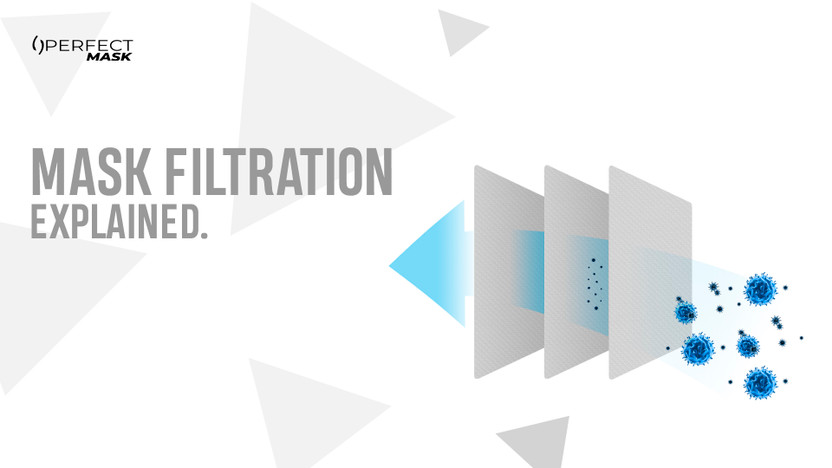How to Think About Mask Filtration
Posted by Perfect Mask on Mar 15th 2021
Mask Filtration: Explained
Once a rarity in the U.S, the pandemic has made facial masks a ubiquitous sight when taking a trip to the grocery store or visiting just about any public space. And with increased use, the science behind how facial masks work has consequently been of growing interest to many.
While we know studies have found that community mask use decreases the likelihood of COVID-19 spread, the range of masks available and the relevance of mask selection to you as an individual can sometimes get lost amidst general PSAs to simply wear a mask.
The truth is masks are not all built the same - and there are a number of factors to consider when selecting one, including comfort, material quality and protection. In this post, we will take a closer look at filtration, and specifically how filtration can inform your overall decision making process.
How do I know how good a mask’s filtration is?
If you’re someone who has been relying on a generic face mask in your daily routine, you may be wondering how its filtration stacks up to a standard medical-grade mask, or say an N95 for example.
Each mask has something called PFE or, particle filtration efficiency. This is a measure of how effectively the mask blocks particles from passing through the material. Consider your mask as a colander - the PFE tells you what sorts of food are likely to stay put and what sorts are more likely to slip through.
Particle size is measured in micrometres or microns (μm). For reference, a strand of hair is about 100 to 150 μm wide, while a dust particle can range from 0.20 – 8 μm. Most viruses can range from 20 μm to 250 μm. The higher the mask’s efficiency and the smaller the particle size it blocks, the better the mask’s filtration.
While there is significant variation, most masks can efficiently block particles down to 3.0μm. By comparison, Defender Safety’s Perfect Mask has a 95% PFE for particles that are .1 μm and up - this means that the material used in the mask blocks 95% of particles that are .1 micrometres in diameter and larger.
Filtration and Breathability
As filtration improves, it’s important to note the comfort-level of the mask is impacted. If a mask has an incredibly high PFE, that means the material is blocking incredibly small particles and therefore will have smaller openings. This is why as filtration increases, masks tend to become less breathable.
In practice, this means if you’re going for a long walk outdoors, you may want to opt to wear a mask with a lower PFE and more comfort, such as an ASTM Level 1 mask, since your particle exposure will be less concentrated and you’ll be wearing the mask for a longer period of time. Alternatively, should you need to enter a higher risk environment, such as helping patients in an enclosed hospital setting, the increased PFE in an ASTM Level 3 mask will then be more suitable.
Ultimately the decision you make regarding what mask to use and the filtration you need should take into consideration a series of factors that include your occupation, the environments you frequent and the length of exposure to other people.


